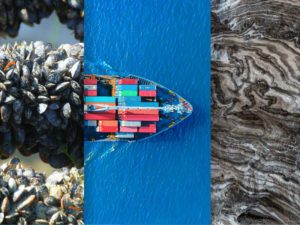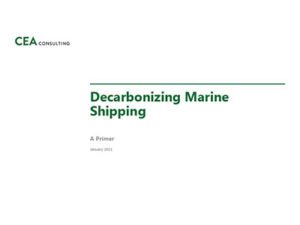If the shipping industry were a country, it would rank as the sixth largest greenhouse gas emitter in the world. Decarbonizing the shipping sector will require a combination of government actions, corporate commitments, operational strategies, and technical innovations. Our Shared Seas checked in with Jason Anderson, ClimateWorks Foundation; Dan Hubbell, Ocean Conservancy; and Madeline Rose, Pacific Environment to review domestic and global priorities for decarbonizing the shipping sector.
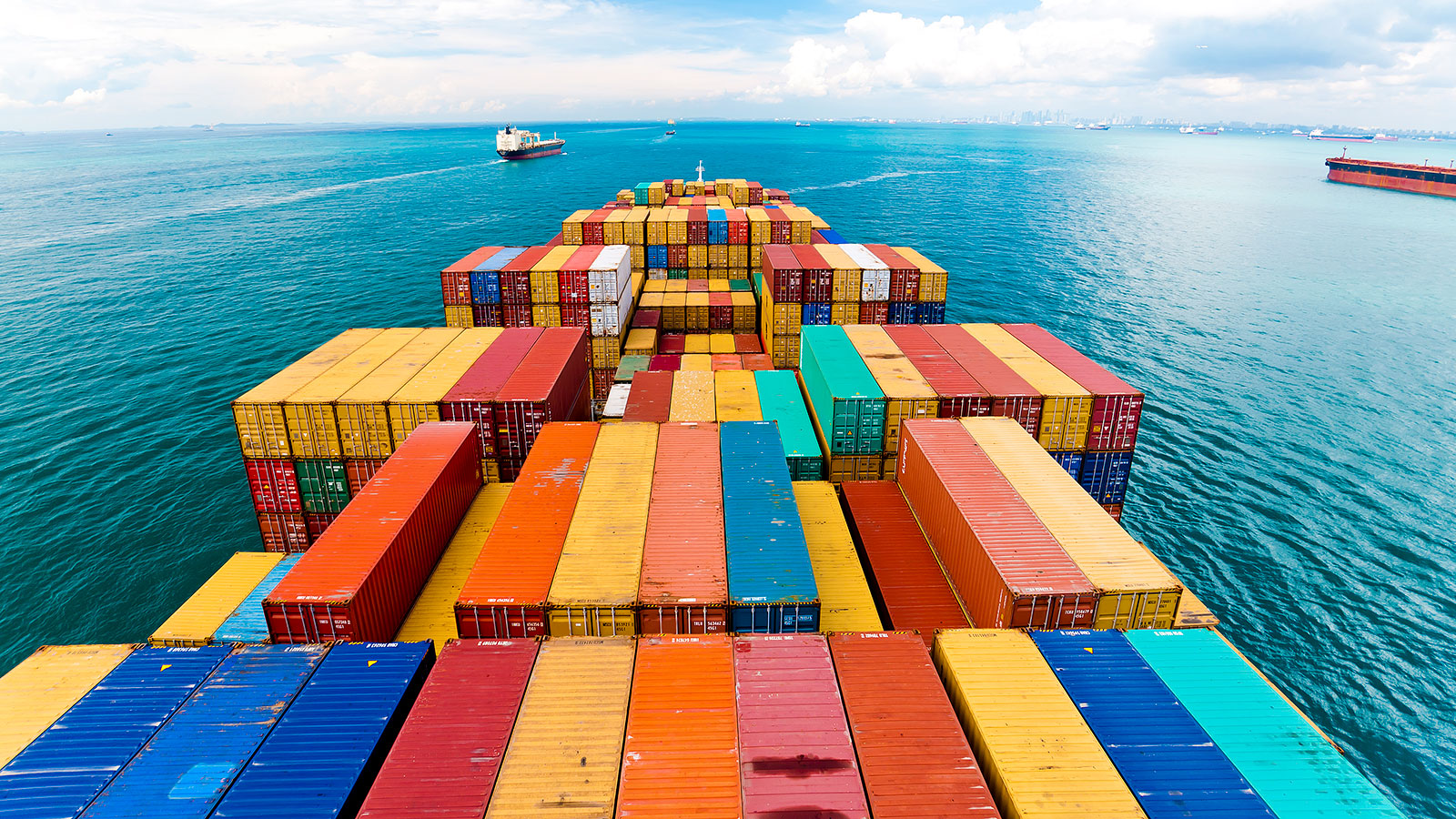
Photo: donvictorio / iStock
The Biden Administration has proposed a USD 2.2 trillion jobs and infrastructure package, which includes USD 17 billion for ports, inland waterways, and ferries. What would this infusion of funding mean for domestic work to decarbonize the shipping sector?
Jason Anderson, ClimateWorks: The proposed support could be massively beneficial to the sector. Ferries and other smaller vessels operating closer to shore or inland are first in line to use alternatives to fossil fuels, and early movers are already proving the technologies and economics. They also operate closer to people than ships on the high seas, so cleaning them up will make a visible improvement to local air quality.
Ports are where it all comes together: ships, trucks, off-road equipment, industry, global trade, and frontline communities. They are massively important to our economies and yet largely outside the public eye. An infusion of federal funding could lay the basis for a transformation of these vital facilities, while protecting the health and well-being of communities.
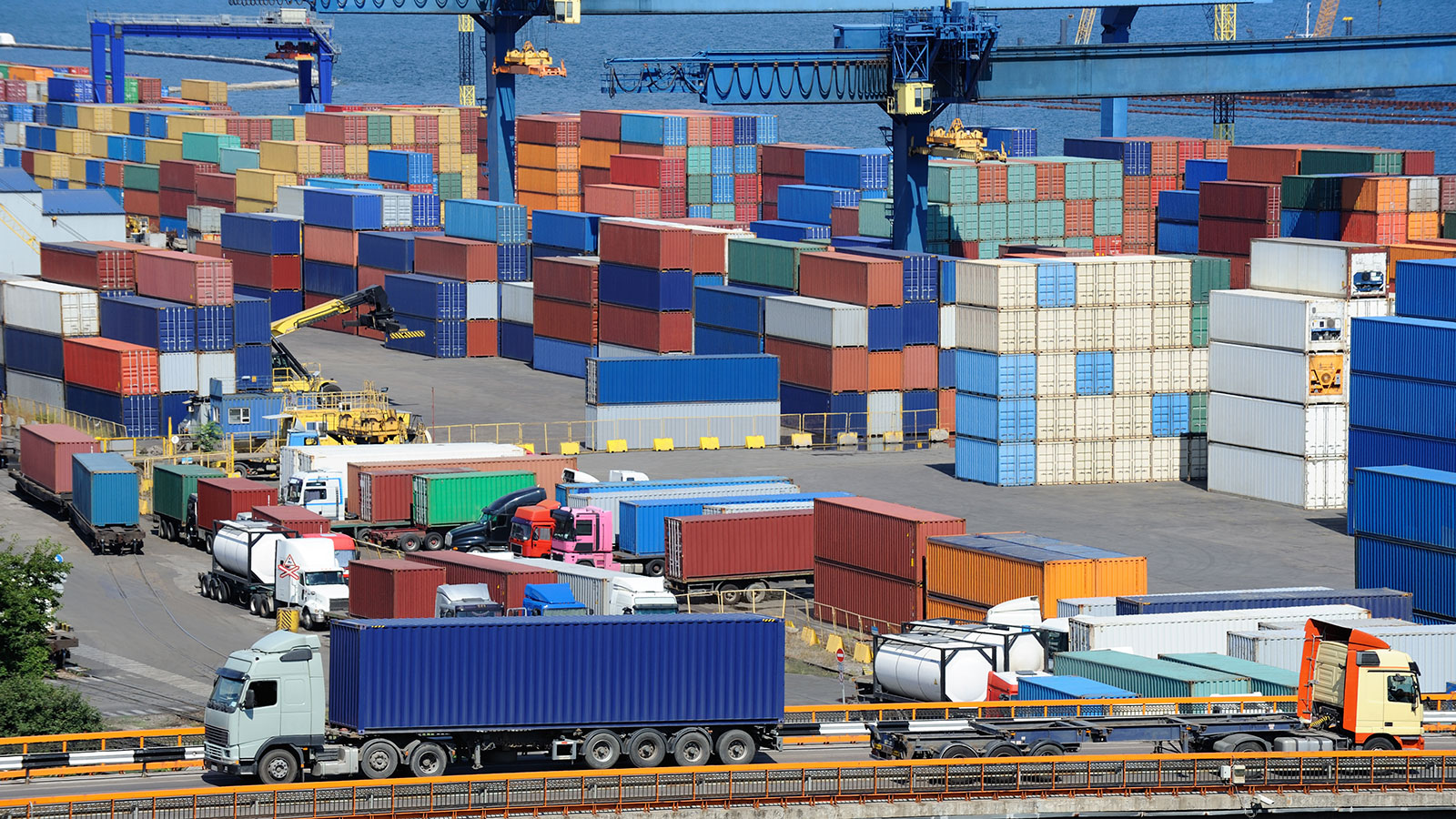
Photo: soleg/iStock
What are domestic priorities for decarbonizing the shipping sector? How could the United States assert its global leadership on this issue?
Jason Anderson, ClimateWorks: Domestic action will drive U.S. credibility internationally as well as transforming the sector at home. The US should first assert its goals—aligning shipping with the Paris Agreement, which means aiming for decarbonization by 2035. That needs be backed up by a range of policies and support, starting with mandating that ships report their fuel consumption and emissions in a new, transparent, and accurate system.
Ships should then be subject to an operational life-cycle carbon dioxide equivalent (CO2e) intensity standard for vessels sailing in U.S. waters or calling on U.S. ports. This can be ratcheted down over time to reach zero. This transformation can be kick-started by funding support like that proposed in the new jobs package. By striving for these goals at home, the United States will be well positioned to make similar demands in the International Maritime Organization, where a carbon intensity approach supported by funding from a levy or other market-based measure can drive change globally.
Domestic action will drive U.S. credibility internationally as well as transforming the sector at home. The US should first assert its goals—aligning shipping with the Paris Agreement, which means aiming for decarbonization by 2035.
Shipping decarbonization faces a “chicken and the egg” problem. Decarbonizing shipping will require significant investment in zero emission vessel (ZEV) infrastructure, but there is not yet a market to justify those investments. What are your organization’s priorities for driving early investment in ZEV infrastructure to help speed market development?
Jason Anderson, ClimateWorks: Early-stage markets always require a kick-start when there are important policy goals in the public interest that cannot be captured by individual actors. The package of measures and funding described above should be able to achieve that. ClimateWorks Foundation and our grantees and partners are doing everything we can to present the evidence that success is possible and to chart a path to success.
It means supporting studies showing the anticipated cost declines of new fuels over time and how to unlock them. It means motivating industry leaders to make early commitments to getting zero emission ships on the water to prove they are technically and economically feasible. Given that politicians and many in industry have made top-line commitments to decarbonization, our role is on the one hand to remind them of that commitment, and on the other to use our expertise and energy to make it easier for them to find a path forward.
As a global industry that currently moves about 80 percent of global goods by volume and has the greenhouse gas emissions equivalent of a G7 country, it is clear that shipping decarbonization will require international cooperation and collaboration. What are top priorities for putting the global shipping sector on a net zero pathway?
Dan Hubbell, Ocean Conservancy: Reaching zero, or even net zero, will require decisive regulatory action and immediate investment. As noted in All Aboard—the new report by Ocean Conservancy and Pacific Environment—the top priority that will signal swift reductions is the development of a strong carbon intensity reduction tool for the sector which includes all greenhouse gas emissions, not just carbon dioxide.
By setting a carbon limit, we can establish a firm schedule that directs investment into zero emission technologies with support from governments and the private sector. Without this overarching signal, improvements may remain incremental, risk stranding assets in climate dead-ends such as liquefied natural gas (LNG), or seek to merely achieve the bare minimum of what the initial strategy from the International Maritime Organization presented for the sector in 2030 and 2050. The climate will not settle for the lowest version of “at least 50 percent” by 2050.
We are in the “decisive decade” for climate action, and time is of essence particularly for an industry like the shipping sector which requires lead time to transition the shipping fleet, develop new infrastructure, and advance the development and implementation of low-carbon and zero-carbon fuels. What policy signals would incentivize industry to pursue decarbonization at speed and scale?
Dan Hubbell, Ocean Conservancy: Whether it was the advent of container shipping or the transition from coal to oil, the shipping industry has shown itself capable of remarkable and rapid transformation with the right signals. As noted by the Getting to Zero coalition, investment into green fuels must happen this decade, but modest shifts in the next few years could trigger a revolution in the 2030s.
One key signal is a firm regulatory timeline that will drive total decarbonization. This step cannot happen without strong government and global support. For major companies moving consumer goods, their commitment to ship goods on zero emissions vessels could be a powerful signal from the private sector. We’re already seeing the first of these. For instance, Michelin signed a letter of commitment to ship tires on the wind ship NEOLINE.
Government support for these early adopters is also key. In the United States, one idea for reducing congestion on highways prompted the Marine Highways Program. Imagine a similar program, where zero emission corridors began to crisscross our seas this decade, laying the markers for first domestic, then international shipping routes and directing the necessary investment. With the willing support of their customers and incentives, such as a price on carbon or rebates for zero emission fuels, shippers could make the leap to zero well before 2030.
…the shipping industry has shown itself capable of remarkable and rapid transformation with the right signals. Investment into green fuels must happen this decade, but modest shifts in the next few years could trigger a revolution in the 2030s.
Decarbonizing the shipping sector could yield significant environmental justice benefits. Can you share an overview of your team’s priorities to curb pollution in ports, while also addressing the health and livelihood impacts of neighboring communities?
Madeline Rose, Pacific Environment: We have a once in a generation opportunity to overhaul the international shipping industry and reimagine ports for a just, clean air, and clean energy future. The global shipping fleet has quadrupled in size since the 1980s in response to economic policies that dramatically expanded transoceanic trade. Today, every single one of the 50,000+ merchant ships on the ocean run on fossil fuels. In major port communities like Los Angeles and Long Beach, ships are now expected to account for the majority of smog forming nitrous oxide pollution in the Southern California air basin by 2023, surpassing heavy duty trucks.
Ultimately, the only way to end ships’ fossil fuel pollution is to transition ships off fossil fuels entirely. Pacific Environment is fighting to eliminate fossil fuels from the shipping industry entirely by 2035, replacing current propulsion systems with electro-fuel solutions. This is an ambitious timeline that will require leaps in technology, massive investments, global cooperation, and, perhaps most of all, resolute political will and courage. But it is possible, and necessary.
In the United States, we’re calling on the Biden-Harris administration and major port states like California, Washington, New York, New Jersey, Texas and beyond to lead the way to achieving zero-emission shipping by 2035. Our new U.S. policy report with Ocean Conservancy, All Aboard, provides 20 specific policies that create a roadmap for how the U.S. can realistically move towards zero-emission fuels and ships, clean and renewable sources of onshore power at U.S. ports, and achieve not just net-zero but true zero emissions from the shipping industry in the next fifteen years.
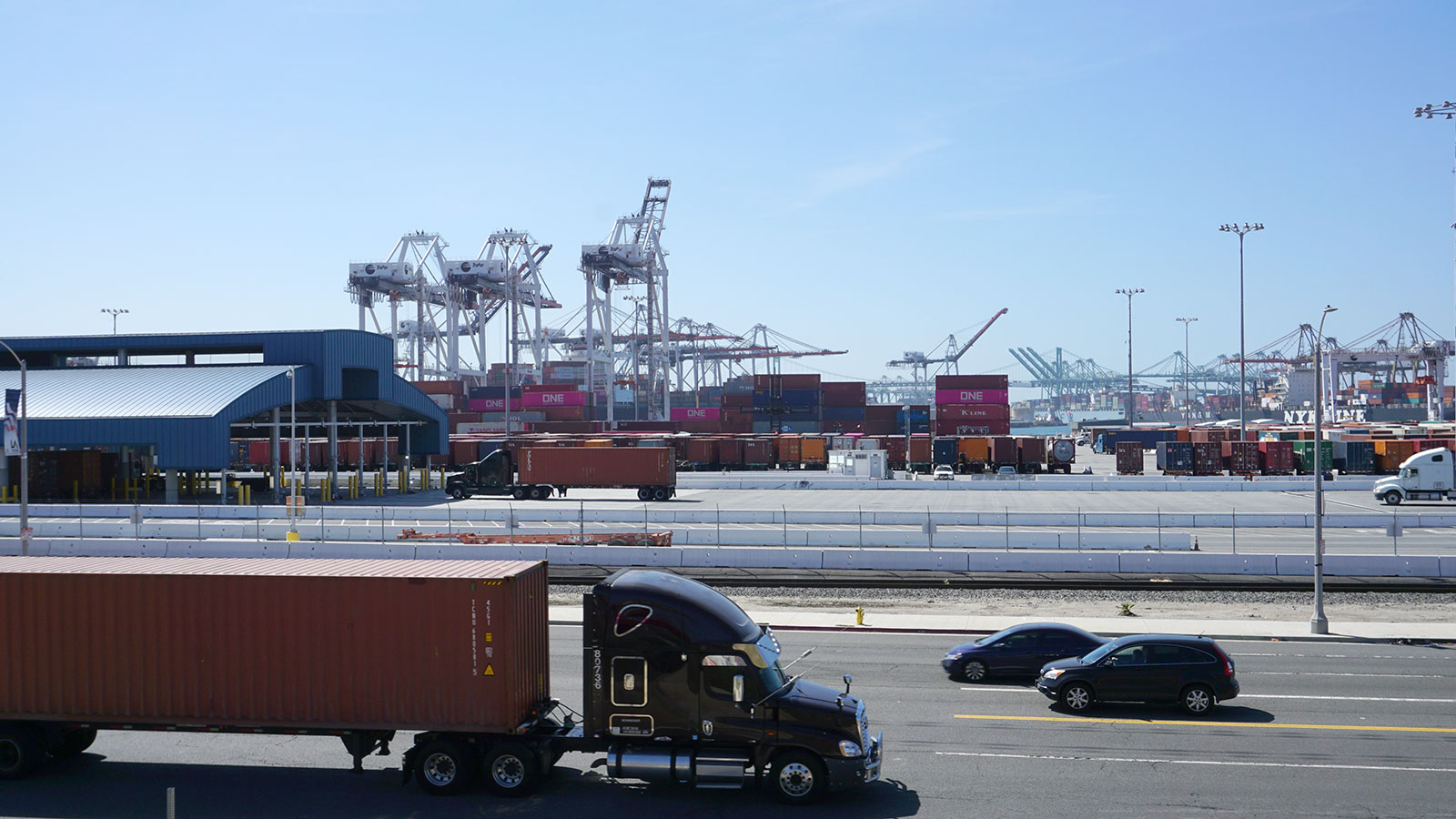
Wilmington, CA, a predominantly Latinx neighborhood, is surrounded by the Port of Los Angeles, heavy industry, and an oil field. Photo: Emmett Institute

